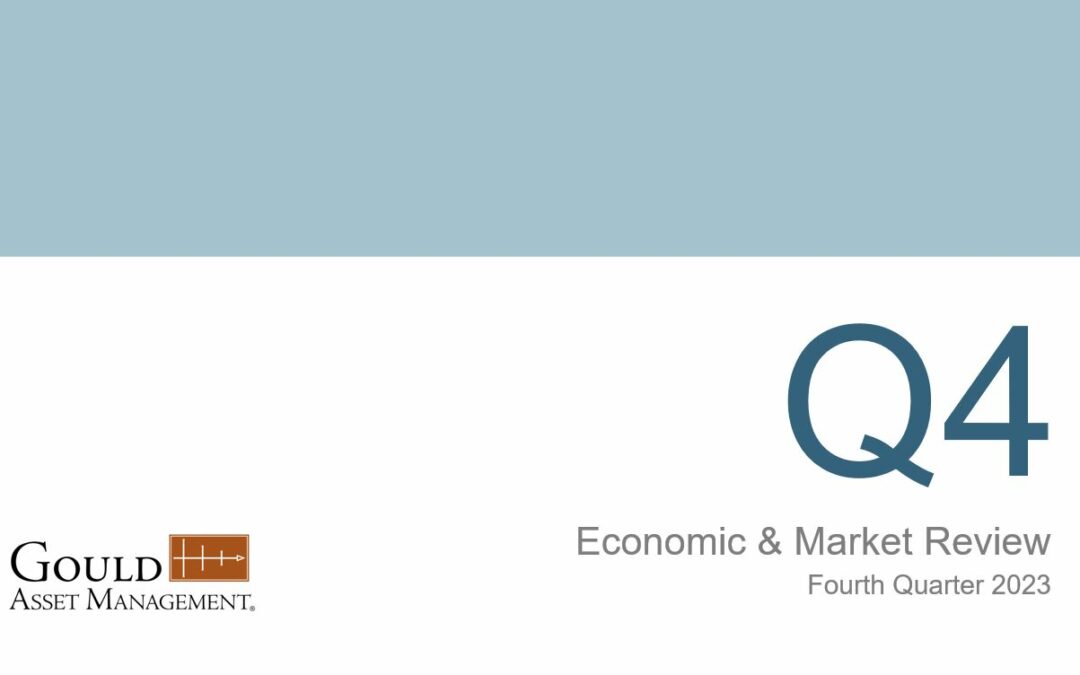by The Gould Asset Management Team
Note: This post is an excerpt from Gould Asset Management’s Economic and Market Review for the Fourth Quarter of 2023. The excerpt is posted here for the benefit of our blog subscribers.
Stocks Surge in Q4, Capping String Year, as Fed Signals Possible Rate Cuts
US stocks finished the year on a strong note, nearing all-time highs in late December, as inflation continued to moderate and the Fed suggested lower interest rates could be in store for 2024. The prospect of more accommodative monetary policy seemed to be the spark investors needed, resulting in US large cap stocks, as measured by the S&P 500 stock index, rising 11.7% in Q4, and finishing 2023 with a robust 26.3% gain.
A market cap-weighted indexed approach proved best in 2023, with a small number of large cap growth stocks accounting for a significant portion of US stock gains. This was evidenced by the top 10 stocks of the S&P 500 accounting for 86% of the S&P 500’s 26.3% gain.
Mid and small cap US stocks, as measured by the Wilshire 4500 index, outperformed large caps on the quarter, rising 14.3% in Q4 to cap a very strong year (up 24.9%). Lower interest rates and moderating inflation weighed positively on investor sentiment, increasing the belief among many that a “soft landing” might be within sight.
Except for Energy, all US sectors rallied sharply in the fourth quarter, led by Technology stocks (up 17.7%), followed by Financials (up 14.0%), and Industrials (up 13.0%). After underperforming in 2022, tech stocks were back on top once again, rising a remarkable 56.1% in 2023 and accounting for much of the S&P’s year-to-date gain.
International stocks were unable to keep pace with US equities, lagging for both the quarter and the year, despite a weak US dollar. The MSCI EAFE index, a measure of international developed market performance, rose 10.5% in the fourth quarter, finishing the year up 18.9%—noticeably lower than the 26%+ returns of US stocks. Emerging market stocks fared even worse, rising 7.9% on the quarter and 10.3% year-to-date, marking another year in which they trailed developed markets stocks.
Market volatility expectations were subdued on the quarter, common in strongly rising markets. The VIX volatility index fell from 17.5 at the start of the quarter to 12.5 by year end, levels not seen since before the pandemic.
To continue reading, please see our entire Economic and Market Review.

